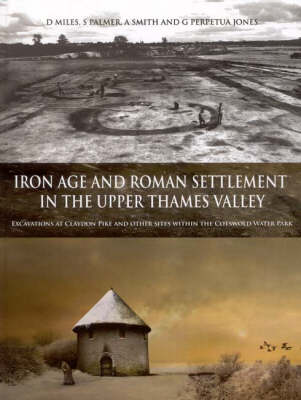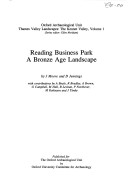Thames Valley Landscapes Monograph
2 primary works • 3 total works
Book 23
Thornhill Farm, Fairford, Gloucestershire
by David Jennings, J. Muir, S. Palmer, and A. Smith
Published 15 July 2004
For over 500 years, from the middle Iron Age to the early Roman period, the 1st gravel terrace of the river Thames at Thornhill Farm appears to have been lived in and worked as a cattle ranch. Extensive excavations by Oxford Archaeology between 1986 and 1989 revealed large parts of the settlement, including paddocks, stock enclosures and droveways, all designed to control and manage the herds of animals. Evidence for domestic houses points to small family groups living at the site and tending to the livestock. The surrounding gravel terraces and floodplain would have formed open pastureland, upon which lay a number of other settlements, some of which were also operating specialist pastoral economies. The settlement at Thornhill Farm was constantly being developed and remodelled until the early 2nd century AD, when it was replaced by a series of trackways and some of the earliest hay meadows in Britain. What happened to the inhabitants of Thornhill Farm at this time is unknown, but it seems likely that the whole settlement was subsumed into a larger agricultural estate based at neighbouring Claydon Pike. The excavations at Thornhill Farm formed part of a co-ordinated archaeological response to the threat posed by gravel extraction during the creation of the Cotswold Water Park. This book presents the results of this phase of work, and discusses the significance of the site within the local and regional landscape.
Book 26
Iron Age and Roman Settlement in the Upper Thames Valley
by A. Smith, Donald Miles, S. Palmer, and G. Perpetua Jones
Published 31 March 2007
The Cotswold Water Park Project is a landscape study centred upon parts of the Upper Thames Valley within what is now the Cotswold Water Park. The report is based upon four key excavated rural settlements, the most extensive being that at Claydon Pike, which dated primarily from the middle Iron Age to the late Roman period. A number of middle Saxon burials were also found. The other Water Park settlements dated to the late Iron Age-Roman period and the 2nd to 3rd century AD. The report has incorporated the results of these excavations into a wider synthesis of landscape development in the region, including aspects of material culture, environment and the economy.
No. 1.
The prime interest of this rescue excavation on a Kennet valley development site on the outskirts of Reading is the Late Bronze Age settlement evidence: semi-circular segmented buildings, four and six post structures, two post supports; paired houses in lines, open space, activity and storage areas; flax retting pits flanking a trackway; and associated field systems. The discussion in this book ties these finds to other local discoveries. Earlier Neolithic evidence suggests some resource-specific rather than domestic activity took place on the site, whilst enclosures and linear boundaries have been found from the Romano-British period.


